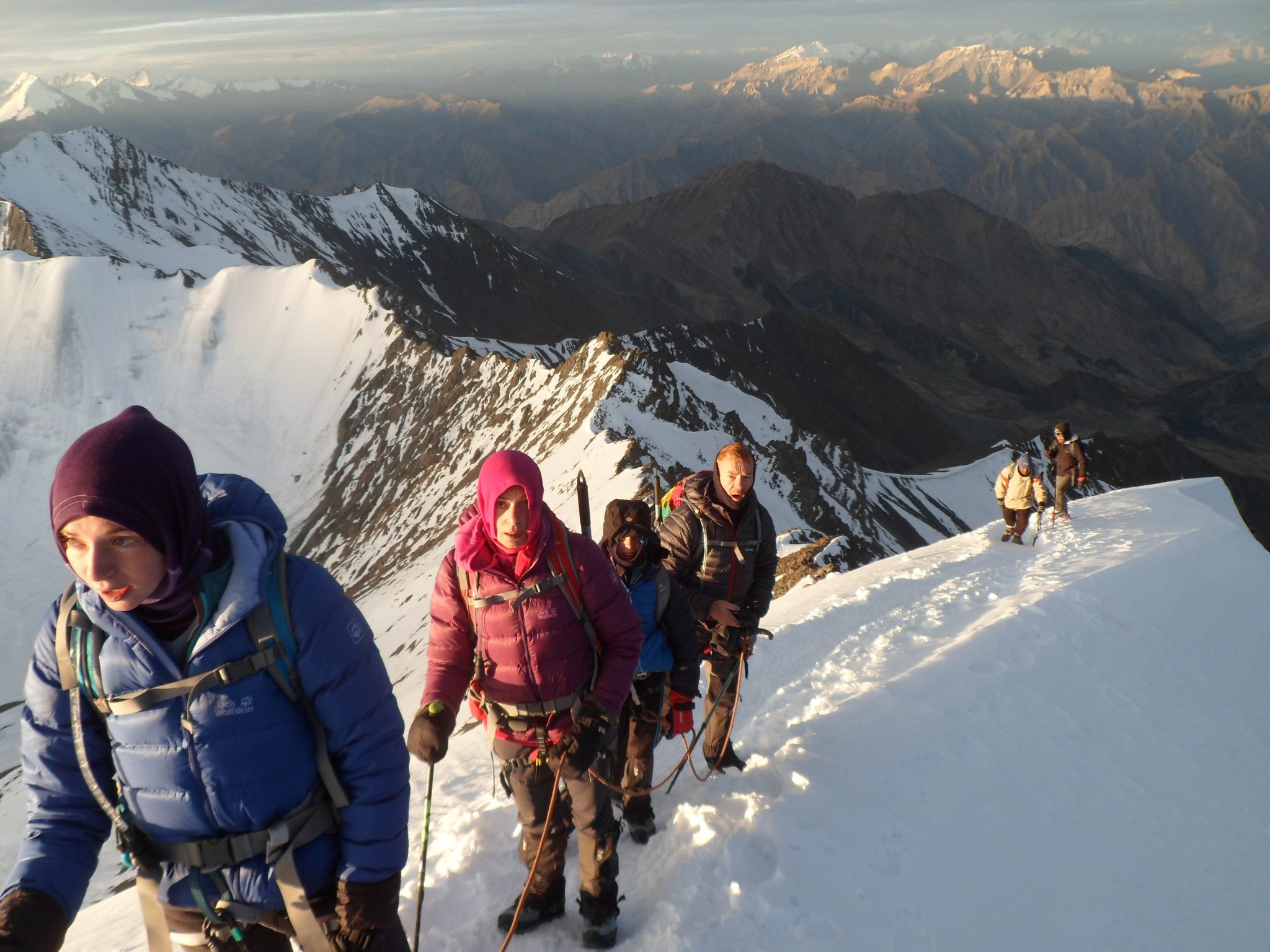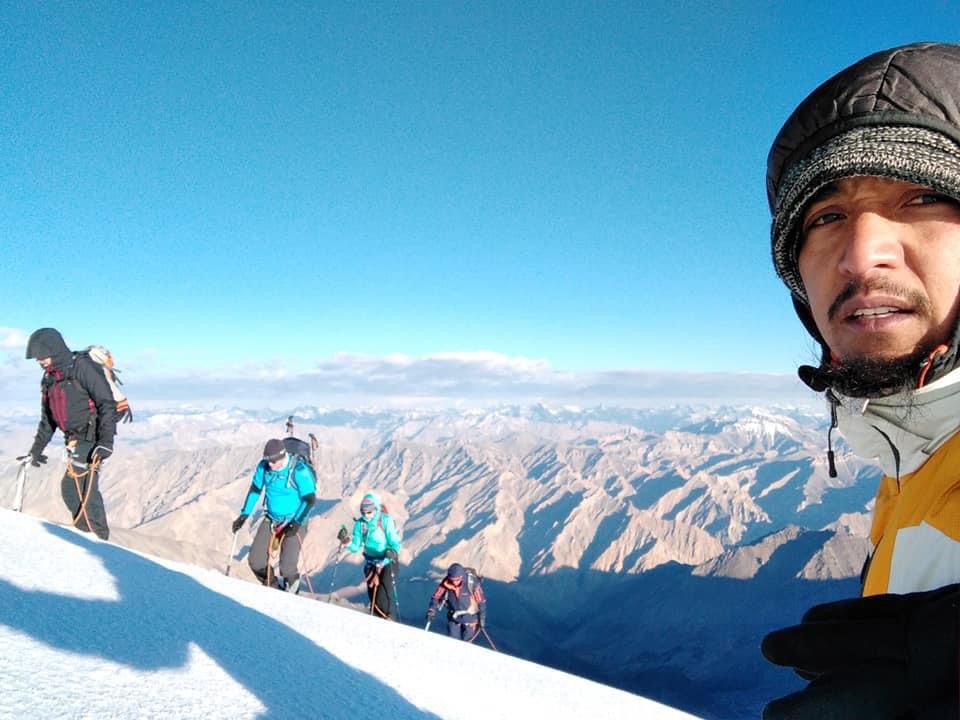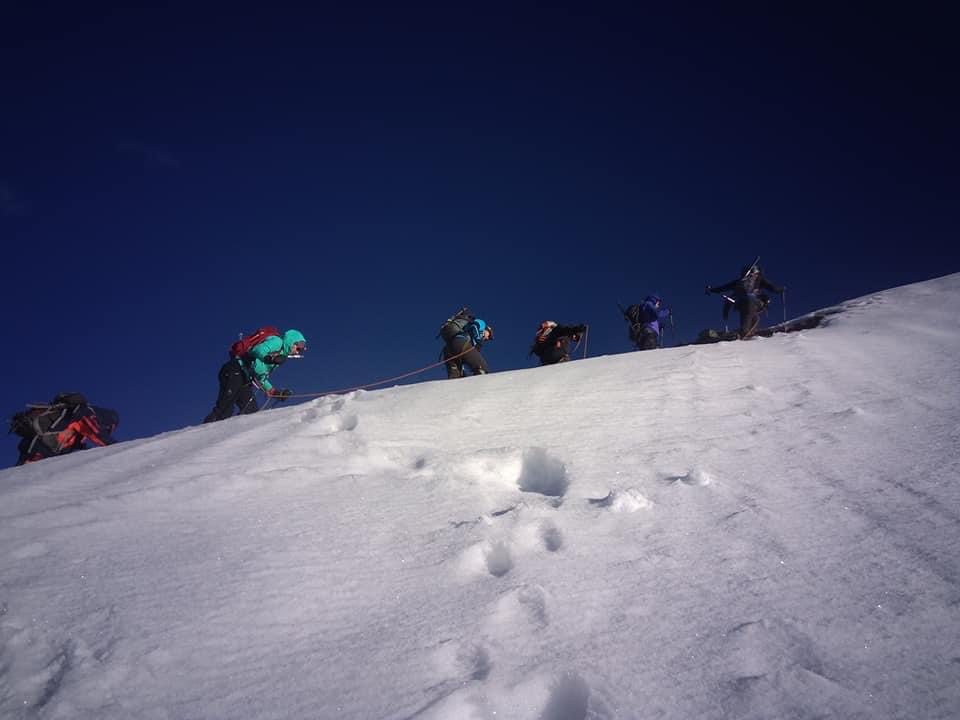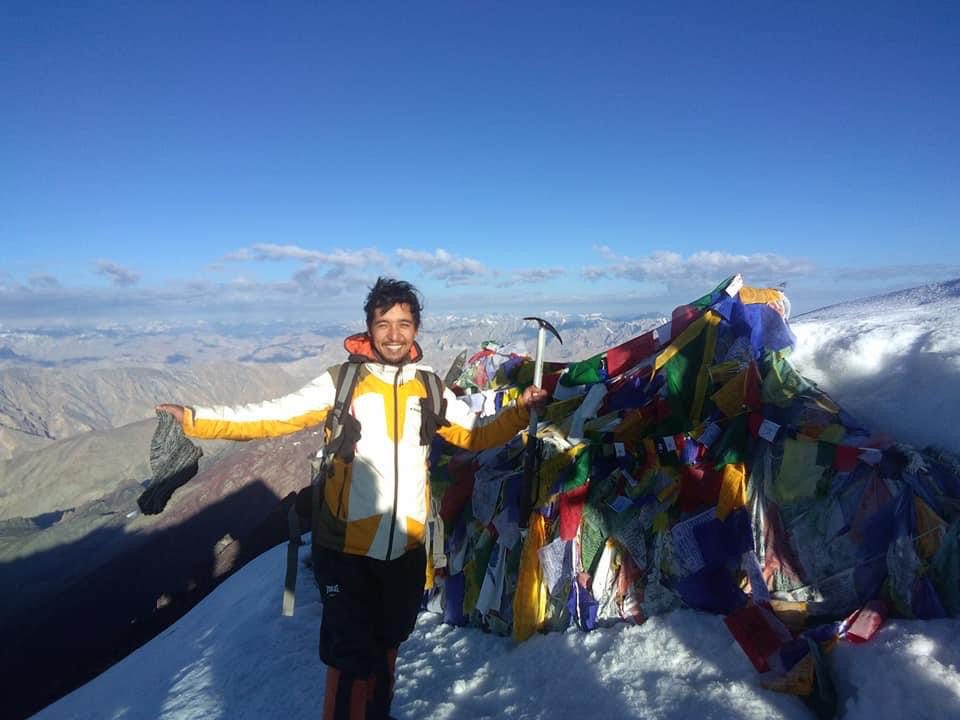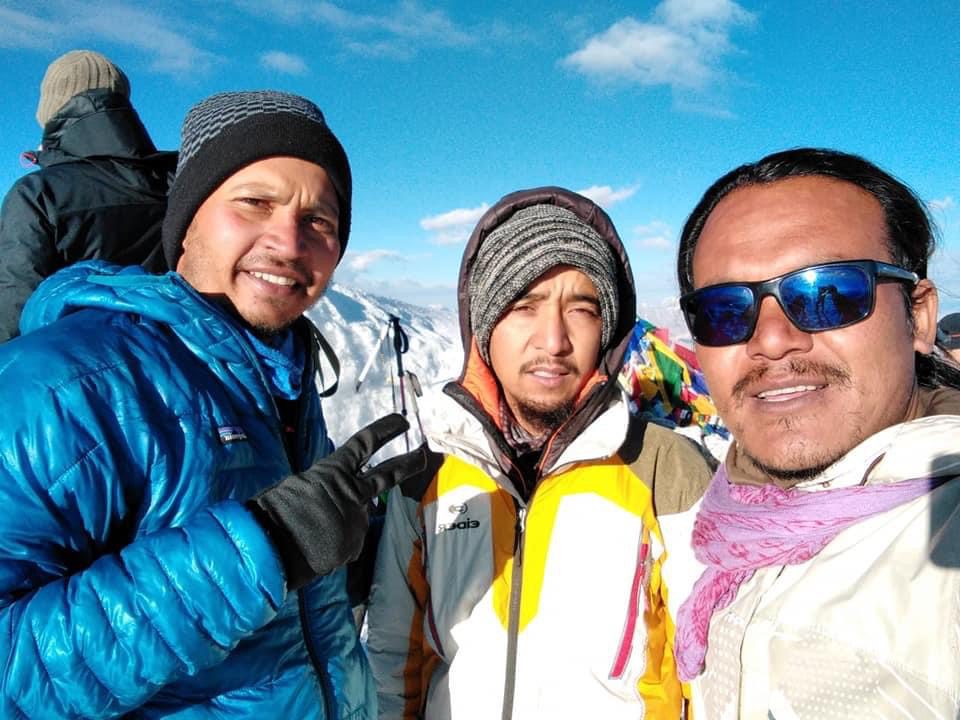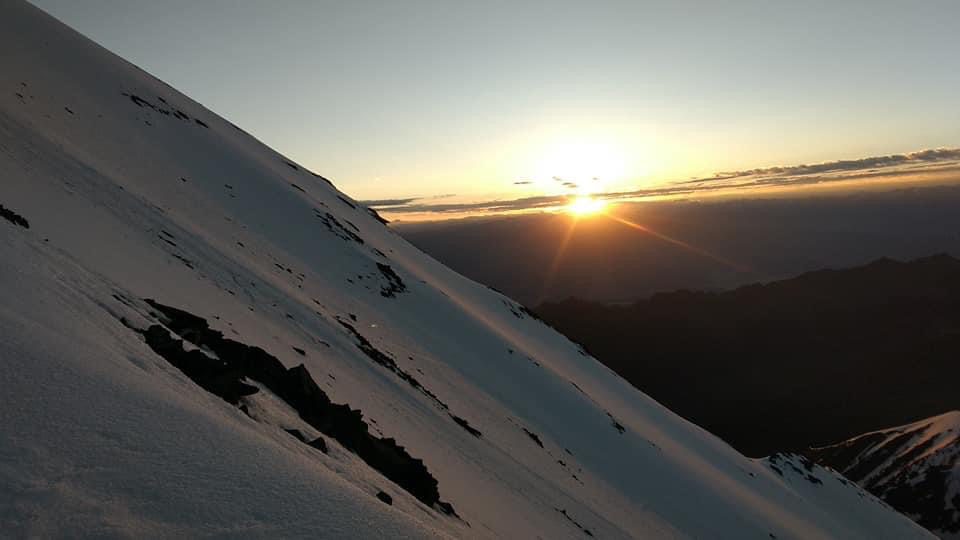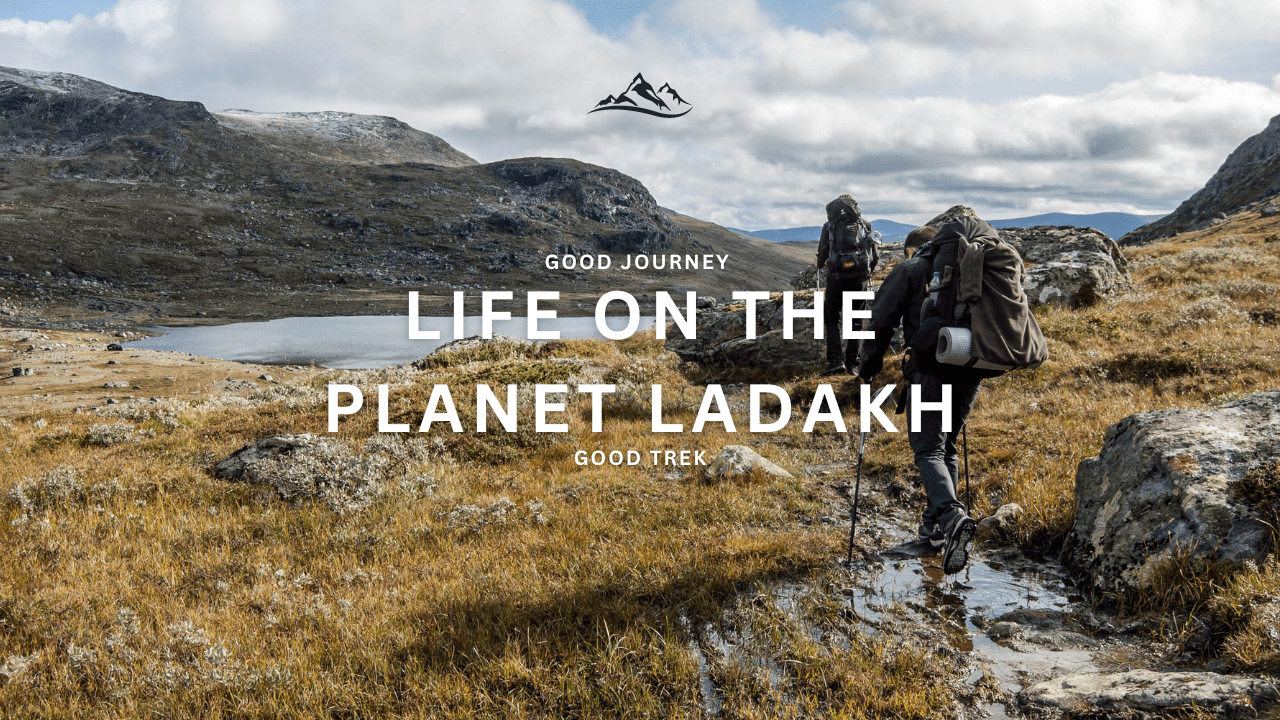On Hold: Stok Kangri Summit: A 9-Day Himalayan Expedition
Temporarily Closed
Important Update: Stok Kangri Closure
Dear Trekkers,
We hope this message finds you in great spirits as you prepare for your next adventure with LIFE on the PLANET LADAKH. We have an important update regarding one of Ladakh's most iconic peaks.
Stok Kangri, the majestic 6,153-meter peak, is currently closed for trekking.
This decision has been made by local authorities and environmental groups to preserve the fragile ecosystem and promote sustainable tourism in the region.
Why is Stok Kangri Closed?
The closure aims to protect the delicate alpine environment and support the local wildlife. Over the years, the increasing footfall of trekkers has led to significant wear and tear on the trails and the surrounding ecosystem. By taking a break, nature has a chance to rejuvenate, ensuring that future generations can enjoy its pristine beauty.
Alternative Treks to Consider
While Stok Kangri may be off-limits for now, Ladakh offers a plethora of breathtaking trekking routes that promise equally mesmerizing experiences. Here are a few alternatives that might pique your interest:
- Markha Valley Trek: A journey through picturesque villages, lush green fields, and high-altitude passes. It’s a trek that blends natural beauty with rich cultural encounters.
- Lamayuru to Sumda Chun: Traverse through rugged terrains and serene landscapes while exploring ancient monasteries and quaint villages.
- Chhamkang Ri Trek: Discover the less-trodden paths of Ladakh, offering solitude and stunning views that rival any high-altitude adventure.
- Sham Valley Trek: Known as the "Baby Trek," it’s perfect for those looking for a moderate trek through charming villages and monasteries.
Embrace the Spirit of Adventure
We understand that the closure of Stok Kangri might be disappointing for some. However, this is an opportunity to explore new trails and uncover hidden gems within the mystical landscapes of Ladakh. Our team at LIFE on the PLANET LADAKH is here to help you find the perfect trek that matches your spirit of adventure.
Feel free to reach out to us for more details on alternative treks and personalized itineraries. Together, let's embark on a journey that respects nature and celebrates the unparalleled beauty of Ladakh.
If you're looking for an easy yet breathtaking expedition, climbing Stok Kangri should definitely be on your list. Standing at 6150 m, this majestic peak in Ladakh boasts one of the most stunning views of the Karakoram Range, home to the mighty K2. And the best part? You don't need any technical skills or mountaineering experience to conquer this beauty.
To make your journey even more enjoyable and hassle-free, we've prepared a detailed itinerary for you. Keep on reading to learn more!
Day 1: Arrival in Leh
To start your adventure, you'll first need to reach Leh, the capital of Ladakh. While driving can be an option, we highly recommend taking a flight instead. All major airlines offer services from Indira Gandhi International Airport in New Delhi to Leh, with flights scheduled to arrive before noon or latest by 3 pm.
As you approach Ladakh, you'll be treated to a stunning view of the landscape from your aircraft window. The sight of the towering Himalayan mountains and deep valleys will leave you awestruck.
Once you land at the Ladakh airport, brace yourself for the sudden drop in temperature. The average temperature in Leh stays around 10°C, but during winters, it can plummet to -20°C or even lower. The air is crisp and fresh, giving you a feeling of breathing pure oxygen.
After getting acclimatized to the altitude, take a stroll through the Leh market. You'll find plenty of shops selling local handicrafts, souvenirs, and trekking gear. Don't worry if you forgot something, as last-minute shopping is also possible in Leh.
For dinner, we'll serve you delicious vegetarian food to keep you warm and healthy. You'll spend the night in a comfortable guest house located in the main city of Leh, where you can get to know your fellow trekkers, guides, and support staff.
Day 02. Leh (Acclimatization day)
Stok Kangri is an impressive sight from anywhere in Leh, and the morning starts with a steaming hot cup of tea to help motivate you for the day ahead.
Today is an acclimatization day, which means you'll have plenty of time to explore Leh's natural and cultural beauty, and get used to the harsh weather conditions that you'll encounter throughout the trek.
Altitude sickness is a common issue among trekkers, and it's important to take the necessary precautions to avoid it.
To start acclimatizing, you can do some light exercise and stretches to get your body moving and adjust to the cold weather.
For those in their 40s and 50s, carrying an oxygen cylinder is recommended.
A visit to Alchi, which is lower than Leh, is a great way to explore the terrain and learn more about the local culture and heritage.
There are several monasteries and ancient temples that you can visit, or you can spend the day wandering around the Leh marketplace, where you can find local dishes to keep you warm.
It's essential to have your first acclimatization night after arriving at altitudes above 3000 meters before venturing to higher altitudes. Taking it slow and getting accustomed to the environment will increase your chances of successfully completing the trek.
Day 03. Leh to Chang Ma via Stok Village
Embarking on a trek in Leh is a dream come true for many adventure seekers. The experience is rare and highly valued, but it requires strength and serious courage.
Today is the actual start of the trek, and after breakfast, your guide will give you a briefing on the activities ahead.
The trekking starts with a drive to Stok village through a paved road. Along the way, you'll come across many beautiful and exotic scenes, full of lush green, silver birch trees, and colorful flowers.
Stok Village, situated to the south of Leh, is well-known for its royal palace and the King of Ladakh who resides here. If time permits, you can visit the grand palace and the museum attached to it, which hosts many religious and historic artifacts, depicting the history of Ladakh and its ancient rulers.
Stok Kangri is not a camping site, but the place where you start your walk to Chang Ma. As it is just the beginning, the trek might be a bit difficult to start off.
After a trek of around 4 hours, you'll arrive at your destination for the day - Chang Ma, a popular spot for camping. The firm open ground provides a perfect location to set up your tents easily.
As you'll be sleeping at an altitude of more than 3000 meters, it is important to take proper precautions and rest well. You'll have your dinner quickly and go for an early sleep, as the next day awaits many surprises.
Day 04: Trekking to Mankorma
Today's trek takes you to Mankorma, located at an altitude of 14200 ft. The day's journey will include some uphill climb, traversing through the rough and barren landscape of Ladakh. The breathtaking scenery of the towering mountains makes the landscape astonishingly beautiful.
It's important to maintain a healthy rhythm with your trek mates, as there won't be any trees on the trek. The grey barren lands make Ladakh the highest cold desert on the planet, which is its actual beauty. The winds are quite strong and gusty, and you might even sway from side to side. Expect to see valleys and vast barren lands and pass many small streams, where putting your legs into the icy cold water is thrilling.
The trek is fairly easy, and you'll reach Mankorma in a little over three hours. However, there might be instances where you feel symptoms of altitude sickness. Don't hesitate to talk to your trek leader frankly and express your concerns. All our trek leaders are Certified Wilderness First Aid Responders, and they will decide what's best for you. You will enjoy an overnight stay in camps.
Day 05: Trekking to Stok Kangri Base Camp
Day 05 takes you to the Stok Kangri Base Camp, located at an altitude of 5000m. This base campsite is a place where you can enjoy to the fullest. It takes roughly five hours to reach the campsite, and the trek is beautiful in its way.
The area has many water bodies around it, and when the sun rays fall on them, they sparkle like diamonds. The air becomes considerably thinner as you climb, and when you reach the base camp, you have to try hard to breathe. The temperature here is considerably less than other places on the trek.
After having lunch and an hour of rest, explore the nearby mountain peaks of Gulap Kangri, Parcha Kangri, and many others. This is surely going to make your day and prepare you for the final expedition. Take some rest in the base camp to ensure everyone is ready for the extreme days ahead.
Having fun is always necessary for any trek; one game that can be played everywhere is cards. Enjoy a few intense games of cards to refresh your mind and team up with fellow trekkers. In the coming days, you will find a drastic change in the climatic conditions, and even lack of oxygen is going to affect you. Adjust your equipment and trekking gear for the final climb. As the evening falls, your sleeping bags will start calling you. After having dinner, go to bed early as the next day is saved for training.
Day 06: Rest and Training Day for Stok Kangri Trek
Today is a day of rest for the trekkers, but not a day to be idle. It is essential to utilize this time to understand the area and the route to the summit in detail.
Take this opportunity to explore the nearby surroundings and learn about the terrain, depth of snow, and other environmental aspects that will come into play during the climb. Don't miss out on this chance to enhance your knowledge about the region and team-work techniques.
Your trek leader and guide will provide you with detailed training on the upcoming climb, preparing you for the challenges and opportunities that lie ahead. Sink your legs into the soft, fresh snow and experience the thrill and terror of snow trekking. You will need snow trekking boots to plough through the snow with ease.
Pay attention to the weather forecast and understand the surroundings thoroughly. Your guide will provide you with a detailed plan for the next few days, so listen closely.
After training, take some time to rest and prepare yourself for the next day. The upcoming climb will be highly challenging, but it will also bring immense joy and self-confidence when you reach the top.
As usual, the overnight stay will be in camps, but this time, they will be kneeling on the snowy ground. Before sleeping, make sure you are ready to take on the summit with a big heart and might.
By now, you should be familiar with the prevailing conditions during the day, as well as the drastic weather changes during the night. Keep yourself prepared for the climb and enjoy the breathtaking beauty of the surroundings.
Day 07: Base Camp to Stok Kangri and Back to Base Camp
The much-awaited day has arrived! Today, the group will make its way to the summit. At the base camp, there will be many other trekking groups, and it's a good idea to talk to them about their journey to the top. It's a great confidence booster. The atmosphere around the campsite will be buzzing with excitement.
To start the climb, it's essential to wake up early and get ready as soon as possible. The route goes through glaciers, followed by a gradual period of ascent and descent. Finally, it leads to a steep slope to the Stok Kangri ridge.
During the climb, it's essential to avoid drinking too much water and keep breakfast light. This is because venturing out for nature's calls during the climb can be potentially dangerous.
The first couple of hours will be the most challenging and demanding. Team members should stay close by, and a certain rhythm should be maintained. Encouragement from the guide and other fellow members will be of immense help.
After about three hours of trekking, the group will finally reach the glacier. Take some rest here and take pictures. The scenery around is fantastic, and it feels like being in nature's lap. The glacier is the point where the actual climb to the summit ridge begins.
Slow climbers may take more time to reach this point, but there's no need to worry if you can't see them. Keep motivating your fellow trekkers and team members. The stretch will take two to three hours to complete, depending upon the speed.
To walk safely on the thick snow, use your crampons to get a firm grip and avoid slipping. One excellent way to ensure safety is to fix each teammate with a rope. This way, even if the situation worsens, everyone is secured.
On the way to the ridge, you'll have a feeling of self-motivation, and this will help you overcome all the difficulties. After a slow and tiring climb, you will finally touch the ridge. Stand up and see how it feels to watch the world from such a height.
However, don't confuse the ridge with the summit. The real ascent only begins after this point. You can see that the highest point is still a two-hour climb away, and the only access to it is via the south shoulder.
The south shoulder is extremely tough and challenging to traverse. It's very steep at almost 75 degrees and is made up of a narrow channel of rocks. Climb on all fours, as any mistake can lead to a fatal fall.
After an hour of grueling climb and tussling with the rocks, the shoulder will ease its way to a much more gradual slope where you can easily walk. Now, you can see the summit and the prayer flags clearly.
The extremely thin air and lack of oxygen will make every step difficult. After a short hike up, you will finally reach the Stok Kangri Summit, the highest trek-able summit in the Indian subcontinent.
Celebrate as much as you like; take snaps and do pay respects to the prayer flags. The world looks so different from this place; the clouds feel as if they will touch you. The summit offers a great view of the area, with the Karakoram Range and the Saser Kangri dominating the north, and the Zanskar ranges in the south.
The memories captured here will be unforgettable. The return to the base camp follows the same route, but you should be extremely cautious and extra careful this time. When you go down, the gravity also pulls you, which might lead to slipping and a fall.
After reaching the base camp, take some time to settle down and immerse in the memories. The day ends at a very high note, with a sense of accomplishment and pride in having successfully summited Stok Kangri. This experience is sure to leave a lasting impression and a desire for more adventure in the future. As you settle down and reminisce about the journey, take the time to share your story with other trekkers and travelers, as well as on social media to inspire others to embark on their own adventures. Remember to include important details such as the route, safety tips, and the stunning views from the summit, to ensure your content is both engaging and informative.
Day 08: Base Camp to Leh
As your trekking vacation comes to an end, this final day is sure to leave you with unforgettable memories. The high altitude trekking experience you've had over the past few days is unparalleled.
Today's return journey to Leh offers breathtaking views of the snow-clad mountains, adding to the black and white beauty with a touch of grey that Ladakh is known for.
Take some time to rejuvenate and enjoy the trek back to Leh, which may prove to be a bit challenging. Descending too quickly can cause you to lose your balance, so be careful. Today's walk is more than 12 kilometers as you make your way to Stok Village by foot before being driven back to Leh.
After five days of continuous walking, you may find yourself feeling a bit nostalgic and missing the excitement of the climb. However, once you arrive in Leh, take a hot water bath to soothe any pain and tiredness from the trek.
The guest house bed will feel incredibly comfortable, and you may find yourself drifting off to sleep before you even realize it.
Day 09: Departure from Leh
As you depart from Leh for Delhi, you'll have memories of a lifetime and a deep sense of happiness within you. The Stok Kangri trek will forever be captured in your heart and mind, reminding you of the beauty and adventure that you experienced during your trek.
If you feel up to it, consider reducing the trip length and foregoing any rest days to fully immerse yourself in the experience. The more you explore and push yourself, the more rewarding the experience will be.
Make the most of your journey, and savor each moment as you take in the sights, sounds, and sensations of this incredible trekking adventure.

